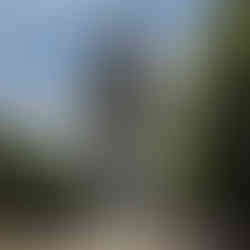Day 48 - Phnom Penh and the Killing Feilds
- laurenfawell
- Apr 16
- 3 min read
Updated: Apr 21
This was another challenging and somber day with a history lesson from our guide on the turbulent past of Cambodia and of course the genocide committed by Pol Pot and the Khmer Rouge in the 1970s.
We learned of the violent history that sadly has been a part of Cambodia over centuries with invasions and wars between neighbors and in particular Vietnam. In fact, much of today's Southern Vietnam and the Mekong Delta were part of historical Cambodia. We also learned of the complex relationship with the French and colonial rule/influence before WWII, followed by an invasion by Japan during World War II and then the return of the French after the war. In the 1960s Cambodia was then caught in the collateral damage of the Vietnam War since the Ho Chi Minh trail ran down the Cambodian border. This of course led to more death and suffering for Cambodia.
The country has gone from a monarchy to communism to democracy (of sorts) and back again over this period. To get to where they are now (a sort of democracy), they had to endure, a number of violent civil wars. The most recent was the rise of a Russia/China backed communistic regime called the Khmer Rouge in the 1970s lead by the notorious Pol Pot. In an effort to exert total control, the regime persecuted, tortured and killed all the "intellectuals", anyone educated and ALL of their family members. They put in place a leadership of often young and poorly educated people who could better be manipulated and would not pose any threat to the rulers. Astonishingly, we learned that from a total population of around 8 million, the Khmer Rouge killed 3 million people (men, women, children and even babies) in less than 4 years (1975-1979).
Our first stop today was at the local Genocide Museum in the city which was the prison site for captured Cambodians during the Khmer Rouge rule. On view at the prison were photographs of prisoners (Khmer Rouge were diligent about keeping track of every person/ photographs were taken of everyone), places of incarceration (which were tiny) and torture rooms. Upon the collapse of the Khmer Rouge, seven prisoner children were found hiding under a pile of clothing that had been taken from the perished victims. Three of the seven survivors, (now in there 80s and 90s), were on site to reflect on their experiences and share their stories.
We chose not to take pictures of the prison but below is a photo from the prison site that is a sculpture depicting the suffering that occurred there.

Our own guide was touched by the misery with the loss of his grandfather who was a professor (an intellectual). His family was told to 'evacuate' Phnom Penh by the Khmer Rouge and they had to walk 40 miles out of the city.
The next stop was even more challenging at the Killing Feilds themselves. We visited Choeng Ek, where Mass graves were discovered of the many people brutally killed during this period. There were 300 of these Killing Fields throughout Cambodia. The grounds included explanations of holding grounds for the prisoners, sites of mass graves and the details of the abuse that occurred. The central Stupa, (shrine), contained some of the human remains of the poor souls who lost their lives here (photos below).

It was tough to deal with the emotions and the sad reality of how humans can be so cruel.
On a more upbeat note, after lunch, we had a quick trip around the Royal Palace grounds which were back in the city center. Their current king has residence here. We got to see more amazing architecture and temples.
Sad Cambodian Facts:
The current population of Cambodia is very young, having lost over one third of the population to the genocide.
Pol Pot was never really held accountable and retreated to the north with residual members of Khmer Rouge where he lived until he was 73 yrs old.
Our guide was born in a refugee camp (due to the genocide) in Thailand before his return to Cambodia



























Comments